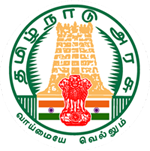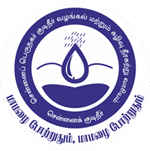



சென்னைப் பெருநகர் குடிநீர் வழங்கல் மற்றும் கழிவு நீரகற்று வாரியம்
Chennai City Water Supply Network Map (Click here)
1.1. Early Water supply source to Chennai (Madras):
- Till about 1870, the people of Chennai (Madras) were dependent on shallow wells situated in their own houses or on public wells and tanks in the neighbourhood for their water supply needs. There was no protected water supply at that time and these sources were not satisfactory.
1.2. Development of organised water supply system:
- The organised water supply to Chennai was commenced in 1872 which is the nucleus of the protected surface water supply system now in existence in Chennai City. A masonry Anicut (weir) of 1.8 m height was constructed, across the Kosathalaiyar River at Tamaraipakkam about 28 km. north-west of Chennai. The unfiltered water from this Anicut was brought to Kilpauk through Redhills Lake by an open channel by gravity and distributed through Cast Iron (CI) pipes to the nearby areas. This initial gravity system consisted of Tamaraipakkam Anicut, Upper Supply Channel of 13 km. length to convey the diverted water from the Anicut to Cholavaram Tank, Lower Supply Channel of 4 km. length to convey water from Cholavaram to Redhills Lake, an open channel of 11 km. length to convey water from Redhills Lake to masonry Shaft at Kilpauk and cast iron mains to distribute the unfiltered water to the city.
1.3. Beginning of protected water supply system:
- The first major milestone towards protected water supply using of filtration and pumping was achieved during the year 1914. An improved intake tower, named as Jones Tower, was constructed in 1881 at the deepest point in the Redhills Lake. An underground masonry conduit of size 1.52m x 1.12m and 11 km. long was constructed to convey raw water from Redhills to Kilpauk, in the place of the open earthern channel, with conveying capacity of raw water at the rate of 104 MLD (23 MGD). Slow sand filters to purify the water (60 to 70 MLD), four underground pure water storage tanks (29.50 ML capacity), steam engine driven pumps, an elevated steel overhead tank (6.75 ML capacity) and 48" dia steel pumping main from Kilpauk Pumping Station to Shaft were installed. Subsequently the distribution system was remodelled and extended to all areas of the city.
1.4. Development of new sources:
- Poondi Reservoir (later named as Sathyamoorthy Sagar) was constructed in 1944 across the Kosathalaiyar River with a capacity of 2573 Mcft and placed in service for intercepting and storing Kosathalaiyar River water. Surplus water flows down the river which is again intercepted by Tamaraipakkam Anicut and diverted to Cholavaram Lake. (A lined canal known as Poondi Canal was later constructed in 1972 to convey water from Poondi Reservoir to Cholavaram Lake). The combined storage of three lakes viz. Poondi, Cholavaram and Redhills was 5596 Mcft (Poondi: 2573 + Cholavaram: 583 Redhills: 2440). The system was then designed for a supply of 115 lpcd for an estimated population of 0.66 million expected in 1961.
1.5. Improvement works carried out during 1946 to 1966:
- To meet the immediate needs, various works for conveyance, treatment and distribution were carried out between 1946 and 1966. Rapid gravity sand filter treatment facilities with 45 MLD capacity were completed in 1959. Construction of a second underground masonry conduit (size 1.98m x 1.22m) to convey additional quantity of 146 MLD of raw water (32 Million Gallon per day) from Redhills to Kilpauk, installations of Electrical pumping units at Kilpauk replacing the 3 steam engine driven pumpsets, second 48" pumping main from Kilpauk Pumping Station to Shaft, 42" Trunk Main to serve South Chennai, 2 additional underground filtered water tanks of 9 ML capacity (2 Million Gallons) each at Kilpauk and expansion and improvement to distribution system are important works carried out.
1.6. Source Augmentation works:
- Simultaneously, action was taken to augment the sources and improve the treatment and storage facilities. The construction of a lined channel from Poondi to Tamaraipakkam for a length of 15 km. to convey water from Poondi to Tamaraipakkam was completed in 1972 to reduce the transmission loss. The combined capacities of Cholavaram and Redhills lakes were increased by 700 Mcft by raising the lake bunds. Thus, the combined storage capacity of Poondi, Cholavaram and Redhills was increased to 6296 Mcft (Poondi: 2573 + Cholavaram: 881 + Redhills: 2842). The irrigation rights of Cholavaram lake and Redhills lake were acquired in 1962 and the entire storage was made available for the City supply.
1.7. Additional works carried out during 1968 to 1978:
- Additional 135 MLD capacity Rapid sand filter treatment facility was commissioned in 1969 at Kilpauk. A prestressed concrete overhead tank of 6.8 million litres capacity and the 7th underground clear water storage tank with 10 million litre capacity was constructed at Kilpauk Water Works. The city distribution system was divided into 12 zones, each zone to feed by a separate trunk main radially from Kilpauk Water Distribution Station. During 1962, a separate water distribution station was constructed at Anna Poonga to serve the northern portion of the city and at Thiyagaraya Nagar, the Southern Head Works during 1973 to serve the southern zones. The existing Kilpauk Water Distribution Station was serving the central portion of the ctiy.
1.8. Abstraction of Ground water:
- Based on the UNDP studies carried out during 1966 to 1969, ground water aquifer was identified at Tamaraipakkam, Panjetty and Minjur in the Araniar-Kosathalaiyar Basin (A.K. Basin) located north of Chennai. These three Well fields were developed for abstracting water at an estimated yield of 125 MLD. Ground water abstracted through bore wells from these well fields was supplied to Industries in Manali from 1969 by the PWD Ground Water Wing, later on, after taking over by CMWSSB in 1978, this water was partly diverted to City's water supply system from 1981.